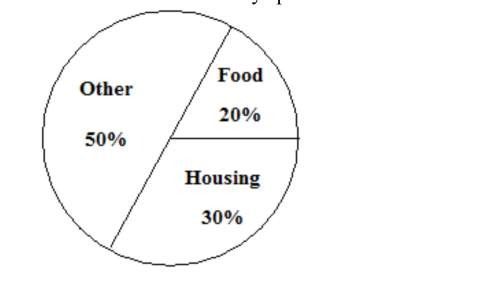0.003

Mathematics, 03.12.2020 18:30, kaylaamberd
I NEED HELP NOW PLEASE
Which decimal represents the portion that is NOT shaded?
0.003
0.03
0.3
3.0
Write how u solved it


Answers: 1
Other questions on the subject: Mathematics

Mathematics, 22.06.2019 00:00, lasardia
At a pizza shop 70% of the customers order a pizza 25% of the customers order a salad and 15% of the customers order both a pizza and a salad if s customer is chosen at random what is the probability that he or she orders either a pizza or a salad
Answers: 1

Mathematics, 22.06.2019 02:00, embersongracie
Asix-sided die of unknown bias is rolled 20 times, and the number 3 comes up 6 times. in the next three rounds (the die is rolled 20 times in each round), the number 3 comes up 6 times, 5 times, and 7 times. the experimental probability of rolling a 3 is 10 %, which is approximately % more than its theoretical probability. (round off your answers to the nearest integer.)
Answers: 1

Mathematics, 22.06.2019 04:30, rederisbetter9379
In cents, what is the least total amount that cannot be obtained by using a combination of fewer than eight coins from a collection of pennies, nickels, dimes and quarters?
Answers: 2

Mathematics, 22.06.2019 07:50, xelynncaldera
Assume the population consists of the values 1, 3, 14. assume samples of 2 values are randomly selected with replacement (see page 23 for a definition) from this population. all the samples of n=2 with replacement are 1 and 1, 1 and 3, 1 and 14, 3 and 1, 3 and 3, 3 and 14, 14 and 1, 14 and 3, and 14 and 14. for part a) of this project, find the variance σ2 of the population {1, 3, 14}. for part b) of this project, list the 9 different possible samples of 2 values selected with replacement, then find sample variance s2 (which includes division by n-1) for each of them, and finally find the mean of the sample variances s2. for part c), for each of the 9 different samples of 2 values selected with replacement, find the variance by treating each sample as if it is a population (using the formula for population variance, which includes division by n), then find the mean of those population variances. for part d), which approach results in values that are better estimates of σ2 from part a): part b) or part c)? why? when computing variances of samples, should you use division by n or n-1? upload your answers for a), b), c), and d). the preceding parts show that s2 is an unbiased estimator of σ2. is s and unbiased estimator of σ? the above problem is from triola’s essentials of statistics, 4th edition.
Answers: 2
Do you know the correct answer?
I NEED HELP NOW PLEASE
Which decimal represents the portion that is NOT shaded?
0.003
0.003
Questions in other subjects:

Business, 02.11.2020 20:20


English, 02.11.2020 20:20


History, 02.11.2020 20:20


English, 02.11.2020 20:20


Mathematics, 02.11.2020 20:20








